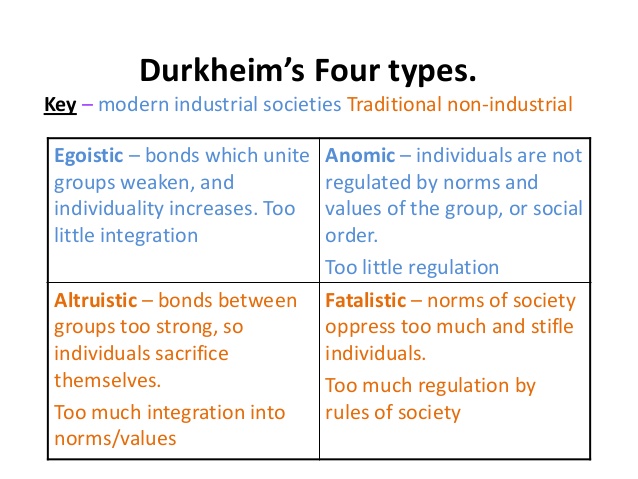Relevance: Sociology
Why in news?
- Between 2016 and 2018, nearly 10,000 students committed suicide every year in India, data tabled by the Human Resource Development Ministry in Parliament show.
Key highlights:
- The Ministry sourced its data from ‘Accidental Deaths and Suicides in India’, which in based on data provided by the states and Union Territories.
- Maharashtra accounted for 1 in every 7 student suicides in the country — 4,235 out of 29,542 in the three years combined, or about 1,400 a year. Maharashtra had over 1,300 student suicides in each of the three years, while West Bengal was the only other state with over 1,000 in any single year — 1,147 in 2016.
- In the overall three-year totals, Maharashtra was followed by Tamil Nadu (2,744), Madhya Pradesh (2,658) and West Bengal (2,535). Eight more states totalled over 1,000 student suicides in the three years, with Karnataka the highest among these at almost 2,000.
- Among the Union Territories, Delhi had 626 student suicides — 211, 212 and 203 in the three successive years.
Sociological Perspective
Suicide is a major theory of social constraints relating to collective conscience. It is cited as a monumental landmark in which conceptual theory and empirical research are brought together. In his theory of suicide, Durkheim attempts to examine a seemingly personal phenomenon in a sociological way.
He defined suicide as ‘Suicide is any case of death, caused by directly or indirectly, positive or negative action of the victim himself which he knows will produce this result.’ Positive actions are those actions taken by the individual to end one’s life, for example, consuming poison. Negative actions are in form of inaction which causes death, for example, starvation and remaining inside a burning house. Indirect causes are those when a person has no intention of dying, though he knows that he may die, as in case of army persons, fire fighters, etc.
He gave the following arguments in his support –
– Durkheim proved that suicide cannot be explained through psychological, geographical, climatic, hereditary factors, etc. and hence, rejected existing explanations. He used data to show that there were no positive correlation between the rate of suicide and different non-social factors like temperature, insanity, race and alcoholism.
– He explains sociological causes of suicide by correlating suicide rates with various social factors.
– He proved that certain rate of suicide is normal in society with the help of statistical data.
By rejecting the various extra-social factors such as heredity, climate, mental alienation, racial characteristics and imitation as the cause of suicide, Durkheim arrived at the conclusion that suicide which appears to be a phenomenon relating to the individual is actually explicit to individual and can be analysed logically with reference to the social structure and its ramifying function which may induce, perpetuate, or aggravate the suicide potential.
He explored causes of suicide in other social causes by using statistical techniques and found concomitant relation between suicide rate and different social variables attached to the people who committed suicide.
Different social variables that were taken by Durkheim were – marital status, locality, i.e., rural or urban, developed or under-developed, religious orientation, i.e., Protestant or Catholic, Jews or Christians and sex, i.e., male or female. He undertook the multivariate analysis to establish the relationship between rates of suicides and social factors. After a detailed research, he concluded that –
– Males have greater suicidal tendency as compared to females.
– Rate of suicide is found more among the bachelors as marriage protects individuals against suicide by integrating individuals into stable social relations.
– Underdeveloped countries have less rate of suicide than developed countries.
– On the basis of religion, Protestants commit more suicide than Catholics. Durkheim reasoned that since Protestant religion gives its members more freedom of interpretation of religion and free inquiry, they are less integrated to Church than Catholics.
– Some categories of people who are men, Christians and unmarried, commit more suicide than women, Jews and married group.
On the basis of his analysis, he identified two types of bonds that integrate and regulate individual into the society –
Forces of Integration – These result into two types of suicide associated with two states of integration – over integration and low integration.
- Altruistic Suicide – It results from over-integration of an individual. It is characteristic of traditional societies with a high degree of mechanical solidarity. Altruistic suicide is instanced by cases such as the suicide of military officers for the honour of the regiment, or the self-sacrifice of a leader’s family and retinue on the leader’s death, or the self- sacrifice of suicide bombers. Acts like Sati in India. In such cases the bonds within the social group are so strong and intense that they create among the members a powerful sense of group identity. Individuals are so dependent upon the group for their sense of identity, in fact, that they think themselves less important than the group and are willing to give up their lives in order to respect and preserve it and its values.
- Egoistic Suicide – In this case, suicide is the result of low integration of individuals in society. Suicide results from the social isolation of the individual. It occurs among those who have fewer social ties, such as those who live alone in rooming houses rather than with a family, or those burdened with an intense spiritual loneliness. For Example, Protestants have a higher suicide rate than Catholics since Protestant teachings emphasise that one is face to face alone with God, that one’s relationship is entirely direct, and that one must, therefore, carry the entire burden of effort essential to one’s salvation. Roman Catholic teachings, however, make the church and its practices the basis for one’s relationship with God and provide mechanisms, e.g. the confessional, to share the burden and so to give social support in life.
Forces of Regulation – It implies control of individual by the society. There can be further two types of suicide in society – due to over-regulation and under-regulation.
- Anomie suicide – This type of Suicide was occasioned by insufficient social regulation of the individual. In effect, the moral code of society fails to maintain its hold over the individual. The seemingly paradoxical feature of suicide is that although suicide rates rose during times of economic recession, as we might expect, they also rose during times of economic boom and prosperity, when we might expect them to decline.
The superficial element of the explanation is that both situations—boom and bust—occasion dislocation between the individual’s social position and the socially prescribed morals which relate to them. Within a socially stratified society there are different norms (moral standards) for the different social classes, and they specify different tastes and aspirations for the members of the respective groups.
For example, middle-class people may expect to go to university, while lower-class people may not expect or even aspire to do so. Such norms develop on a collective scale and over time; since they arise from the real situations of the group, they have a realistic character.
Anomie suicide is further classified as – acute economic, when there is sporadic decrease in ability of traditional institutions to regulate and fulfill social needs; chronic economic, when there is an abolition of social regulation, but failure to replace them with new ones.
2. Fatalistic suicide – The group dominates individuals so intensely and oppressively that they are rendered entirely powerless over their fate. These are the results of excessive control of society over an individual, an act of over-regulation. Oppression of individual leads to suffocation and powerlessness. According to Durkheim – ‘Persons with futures, pitilessly blocked and passions, violently choked by oppressive discipline are more likely to commit such suicides. The classic example is the slave who takes his own life because of the hopelessness associated with the oppressive regulation of every action of his. Such suicides are rare in modern societies.
Thus, according to Durkheim, a particular case of suicide can be a case of problems of integration or regulation. In traditional societies, altruistic and fatalistic suicides were more prevalent as individual was over-regulated and over-integrated.
So, suicide is a result of suicidogenic forces, comprising of varying state of integration and regulation in society. These forces are conceptualised in the form of social currents in society. If an individual comes under the influence of these currents, he has a tendency to commit suicide.
Durkheim’s concern was with understanding the mechanisms which structured relations between the individual and society, with a view to working out how to readjust them in the desirable direction
For more such notes, Articles, News & Views Join our Telegram Channel.
Click the link below to see the details about the UPSC –Civils courses offered by Triumph IAS. https://triumphias.com/pages-all-courses.php




